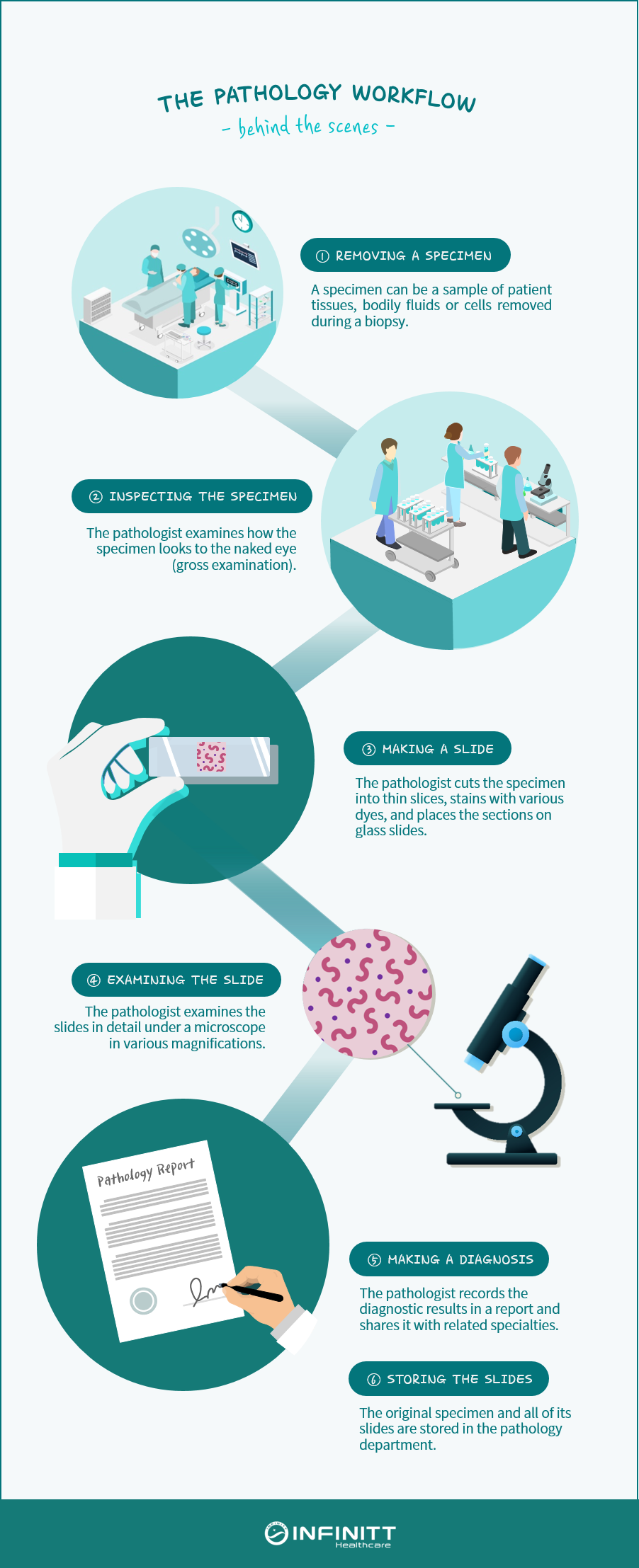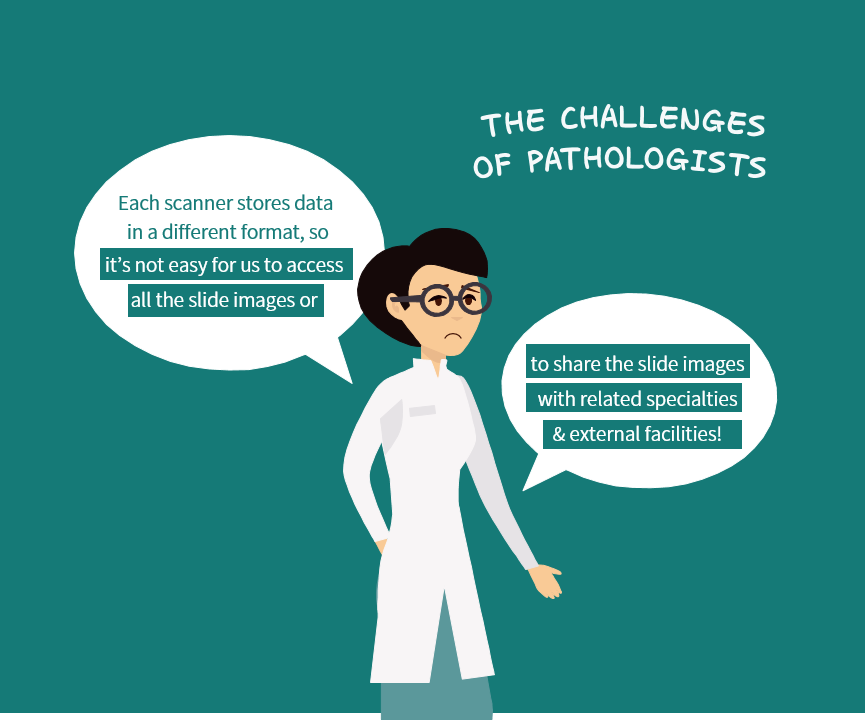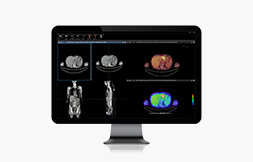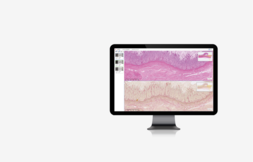While the field of radiology involves the diagnosis of disease through analysis of medical images, the field of pathology involves the diagnosis through examination of surgically removed tissue samples from biopsies. In this article, we’re going to take a closer look into what pathologists do and how they contribute to the overall diagnosis and treatment of patients – behind the scenes.

What pathologists do
Can you guess what go in the blanks above? The answers are pathology and pathologist. Pathologists analyze specimens such as tissues, bodily fluids and cells in biological and chemical ways to diagnose diseases. Your physician determines your current condition and best treatment method based on the diagnostic results of a pathology examination.
How pathologists make diagnosis
So, how exactly do pathologists make diagnosis?

Taking specimens or making slides are certainly tasks unique to the pathology department, which differentiates it from other departments.
Then, are there any challenges that pathologists experience in their daily workflow?
The challenges of pathology department
A pathology slide contains the patient’s health data. Thus, medical facilities are obligated to manage and store patient slides accordingly. As more slides are created, however, there is not only a problem with a lack of storage spaces but also a growing risk of slides getting damaged or lost in the process. To address such problems, more and more medical facilities are adopting slide scanners to convert glass slides into digital images, doubling the storage of slides.
However, there are still unresolved issues. One is that scanners from different vendors store and transfer slide images in different formats. As a result, pathologists have to open up a different viewer for each scanner in order to access all the digitalized slides. In other words, they cannot access slide images easily and quickly for efficient diagnosis.
It’s not easy to share slide images either. Pathologists often send pathology slides to external facilities largely for second opinions, joint research or treatments. Slides are also sent over when a patient is transported from a clinic to a general hospital. But since each scanner stores and transfers images differently, there are still many limitations on sending digital versions of pathology slides. So most medical facilities still exchange glass slides, which not only costs a lot of time and money but also results in loss or damage of slides.

INFINITT Digital Pathology Solution (DPS) has been developed to address the challenges and needs of pathologists. We’ll delve deeper into how INFINITT DPS effectively solves the challenges mentioned above in the next article ‘Why you need a digital pathology solution.’
-
Product Essay
영상의학과의 데이터 활용, INFINITT Enterprise Search로 쉽고 빨라집니다
#INFINITT_Enterprise_Search #영상의학과 #데이터활용

-
Product Essay
INFINITT DoseM으로 시작하는 체계적인 방사선량 관리
#INFINITT_DoseM #방사선량_관리 #dose_management

-
Product Essay
의료 데이터를 바라보는 새로운 관점, INFINITT와 시작하는 데이터 자산화
#데이터_자산화 #enterprise_imaging #INFINITT_Healthcare_Platform

-
Product Essay
INFINITT PACS 7.0이 영상의학의의 새로운 역할을 지원하는 세 가지 방법
#INFINITT_PACS #인공지능 #협업 #판독_효율성_향상

-
Product Essay
INFINITT MDT와 함께하는 효율적인 다학제 진료
#다학제진료 #INFINITT_MDT

-
Product Essay
Enterprise Imaging, 의료 영상 및 데이터 통합 전략
#enterprise_imaging #의료영상데이터통합 #데이터공유 #다학제진료 #빅데이터 #AI

-
Product Essay
INFINITT Digital Pathology Solution으로 구현하는 디지털 병리 워크플로우
#디지털병리 #INFINITT_Digital_Pathology_Solution





